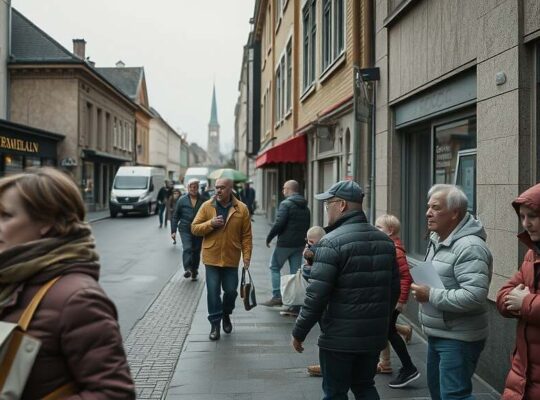Germany’s aging population is driving a significant surge in demand for funeral services, prompting a rapid expansion within the traditionally understated mortuary sector. Official statistics released this week reveal a record 890 individuals are currently undertaking vocational training to become funeral professionals – more than double the number recorded just a decade ago. This growth reflects a stark demographic reality: mortality rates are rising, with approximately 1 million deaths in 2024 alone, a 16% increase from 2014.
The workforce is also expanding. In 2023, the sector employed around 26,300 individuals across 4,200 companies, representing a 2.5% rise in employment. Notably, a substantial portion – nearly one-third – of these employees are engaged in part-time work, a figure significantly higher than the national average for the skilled trades. Revenue has also risen, reaching approximately €2.32 billion in 2023.
While the industry’s growth demonstrates adaptability and economic opportunity, it also exposes vulnerabilities. Rising costs are placing a burden on families. In 2024, prices for coffins, urns, headstones and funeral services increased by 3.9% and 4.6% respectively, exceeding the overall inflation rate of 2.2%. This poses a significant challenge, particularly for those lacking sufficient resources.
The rising demand is also placing increased responsibility on local governments, who provide “social burials” for those unable to afford the costs. While expenditures on these social services have decreased slightly over the last decade, the number of individuals reliant on this support remains substantial. The reliance on municipal funding highlights a complex interplay between societal needs and local financial constraints. Friedhofs (cemeteries) now comprise a significant revenue stream for municipalities, generating €929.8 million in fees and charges in 2023-a notable increase over the past decade.
Furthermore, the industry’s reliance on international trade for essential goods like coffins, predominantly sourced from Poland (85.1% of imports in 2024), raises concerns about supply chain vulnerabilities and economic dependence. While Germany exports a small number of coffins, the import volume dwarfs this figure, underlining a globalized market increasingly sensitive to geopolitical and economic fluctuations.
The rapid growth within the funeral sector mirrors a larger national conversation about Germany’s aging demographic, the sustainability of social welfare systems and the evolving nature of grief and remembrance in a rapidly changing world.












